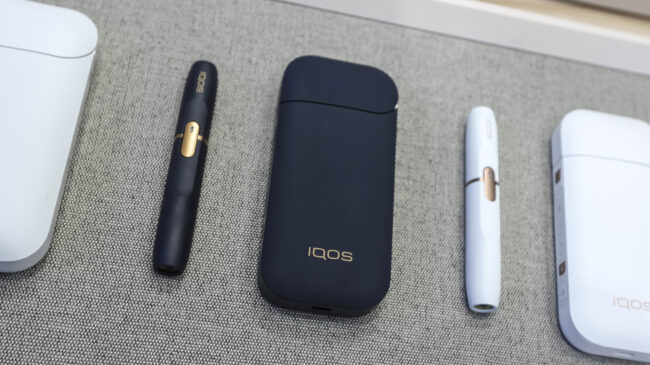Most Americans have never heard of, let alone seen or used, a heated tobacco product (HTP). As the name implies, HTPs heat rather than burn tobacco when producing the vapor users inhale.
Avoiding combustion means heated tobacco products substantially reduce the user’s exposure to harmful and potentially harmful chemicals found in traditional cigarettes. Cigarettes’ danger comes not from nicotine, as is commonly believed, but the smoke that results from setting tobacco on fire. Like e-cigarettes, nicotine pouches, and snus, HTPs give smokers a safer alternative to get the nicotine or experience they desire from smoking while significantly reducing their risk.
IQOS is currently the only heated tobacco product device approved for sale in the United States. After undergoing a costly and extensive review process, in 2019 the Food and Drug Administration (FDA) concluded the IQOS device was “appropriate for the protection of public health.” IQOS is also one of only two tobacco products allowed to advertise that it’s less toxic than cigarettes. But despite clearing these hurdles, heated tobacco products are coming under fire by media and lawmakers.
In July, ABC News released a story claiming the products are targeting teens:
While heated tobacco products only became legal in the United States in 2019, the device have already started to catch the attention of high school students. Nearly one in 10 of California’s 10th and 12th graders have heard of heated tobacco products, with the vast majority saying they first learned about them from the internet or social media, according to a study published in Pediatrics, the official peer-reviewed journal of the American Academy of Pediatrics.
Although the survey found that less than 1% of California teens have actually used heated tobacco products, researchers are worried.
“Our concern is that this is a new product and the design is kind of slick,” the study’s co-author, Dr. Shu-Hong Zhu, who is also the director of the Center for Research and Intervention in Tobacco Control at the University of California, San Diego, told ABC News. “Our goal was to raise the alarm. We fear this might be like the new e-cigarettes.”
Almost one in five students surveyed said they would try heated tobacco products if offered to them by a friend. This number doubled for students who have already used e-cigarettes or vape devices, according to the study.
But as Michelle Minton of the Competitive Enterprise Institute points out, the survey used in the story shows that only 0.7 percent of California 10th and 12th graders reported ever using a heated tobacco product. That number itself may be an overestimate or error as students may have confused HTPs with other products, especially as there are no stores in California that even sell HTPs.
Furthermore, Boston Globe columnist Marcela García characterized a Massachusetts bill to exempt HTPs from the state’s flavored tobacco ban as a ploy by Big Tobacco to elude regulation. García’s analysis is strange considering IQOS had to undergo one of the most burdensome regulatory processes of any product in the country just to be sold. García also claims the marketing order allowing IQOS to inform smokers that it’s less toxic than cigarettes is “troubling.” Surely it would be more troubling for public health if a product proven to be less toxic than the traditional cigarette wasn’t allowed to make smokers aware of this fact?
Instead of summoning the ghosts of past tobacco wars, for hard data on the effectiveness of heated tobacco products we can look to Japan, where HTPs were first introduced in 2014. Japan’s tobacco regulation is among the most relaxed in the developed world but e-cigarettes are banned in the county. Without access to vaping devices, HTPs should be relatively popular with youth who may want to experiment with novel tobacco products.
According to a study published in Tobacco Control, the opposite is true. Youth use of HTPs in Japan is exceedingly low, with just 4.8 percent of Japanese teens aged 15-19 using an HTP at least once in the last month. Japan’s smoking age is 20. Among HTP users of all age groups, only 2.7 percent are never smokers. “The widespread availability of HTPs in Japan may encourage smokers of cigarettes to replace them with HTPs,” the study said.
A separate study by the American Cancer Society examining IQOS’s effects on the Japanese cigarette market during the years 2014-to-2018 concluded IQOS “likely reduced cigarette sales in Japan.” From the first quarter of 2016 to the first quarter of 2021, Japanese cigarettes sales plummeted by 43 percent.
According to the data available, heated tobacco products are working as intended. They appeal to smokers, drive down cigarette sales, and have little to appeal to youth. Sadly, the opportunity that these products present to reduce deaths from smoking could be jettisoned in favor of other goals that are less focused on health outcomes.

